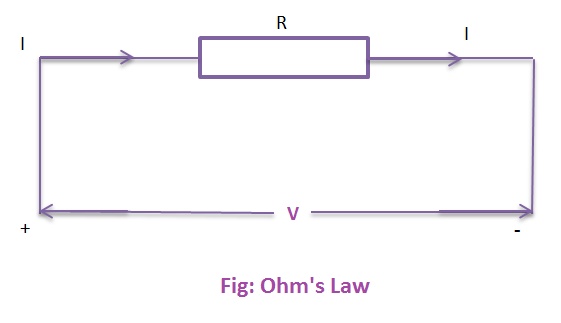Ohm’s Law:
When a certain potential difference or voltage is applied across a conductor, Current will flow through the conductor. The great German scientist Dr. George Simon Ohm discovered a definite relationship between applied voltage and current which was considered afterward as Ohm’s law.

Let us take the voltage difference or potential difference between the ends of the conductor material be ‘V‘ and the current flowing through it be ‘f’ then according to Ohm’s law.
I∝V
or, V/I=constant
This constant is known as the resistance of the conductor material and it is denoted by ‘R‘.
∴ V/I = R
Ohm’s law holds good where temperature, pressure, and other physical conditions don’t change. It doesn’t hold good for electrolytes are lamps, semiconductors, vacuum tube radio valves, gas-filled tubes, transistors, etc.